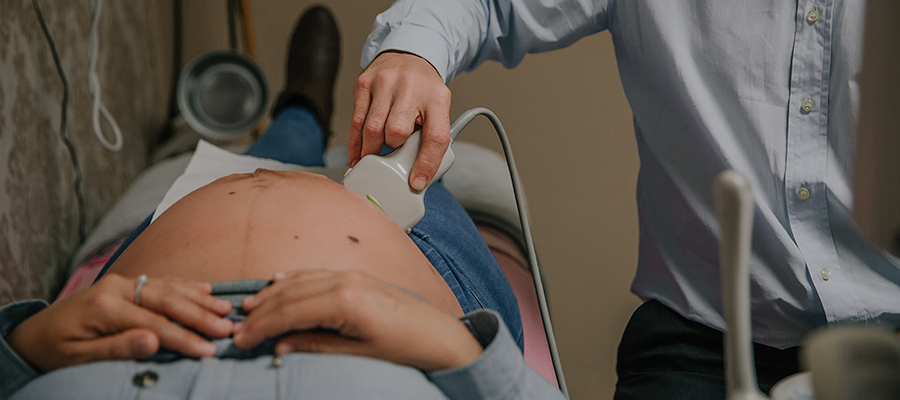


Ultrasound technology has revolutionised the field of obstetrics and is an essential tool for pre- and antenatal care. Using ultrasounds, Dr Deon van Zyl can visualise and monitor your baby's development, diagnose potential health issues, and provide you with peace of mind.
Ultrasounds have different purposes based on where you are in your reproductive journey. There are five main ultrasounds that you will have throughout your pregnancy.
First-trimester screening: This is usually done in weeks 11-13 and involves a combination of nuchal translucency (NT) ultrasound and a blood test. It's used to measure the thickness of the fluid at the back of the baby's neck, which can indicate chromosomal abnormalities. Combined with the blood tests and your age, Dr van Zyl can estimate the risk of having a baby with chromosomal abnormalities.
Diagnostic ultrasound: This allows Dr van Zyl to detect specific health issues in your baby, such as congenital heart defects and other structural abnormalities. It can also help confirm the presence of multiples.
Growth ultrasound: This is a more general screening used every 4-6 weeks during pregnancy to monitor your baby's development. It can also highlight potential problems in pregnancy or birth risks.
Gender determination: Between 18-20 weeks, we can typically determine the gender of the baby using a gender determination ultrasound. This is always an exciting time for parents and a significant milestone in the pregnancy journey.
Fetal echocardiography: This ultrasound is a crucial tool for ensuring the baby's heart is developing correctly and can help prevent potential health issues down the road. It examines the baby's heart and blood vessels in detail for abnormalities.
Ultrasound is a non-invasive imaging technique using high-frequency sound waves to produce images of the inside of the body.
When an ultrasound probe is placed on the skin, it sends out high-frequency sound waves that penetrate the skin and bounce back off the body's internal structures. These waves are picked up and processed by a computer to create an image on the monitor.
They are entirely safe, with no known risks to the mom or baby.
Receiving an ultrasound is a simple and painless process, save for the slight chill of the clear gel we use. Before the ultrasound, Dr van Zyl will ask that you drink plenty of water and avoid going to the bathroom to ensure your bladder is full. This helps create clearer images during the ultrasound.
Dr van Zyl will apply the clear gel to your lower abdomen and move the probe over the area. The gel helps the probe move over the skin more easily and prevents friction. During the ultrasound, Dr van Zyl may ask you to switch positions or hold your breath.




Fill in the form below and we will get back to you as soon as we can.